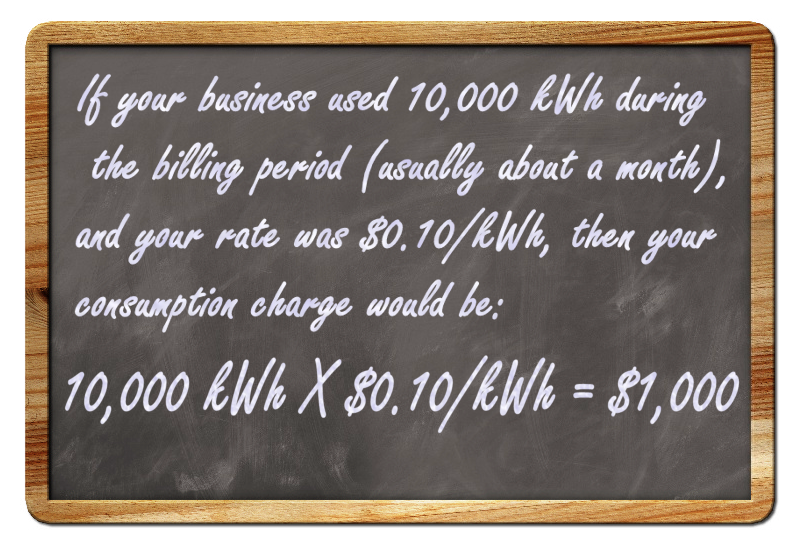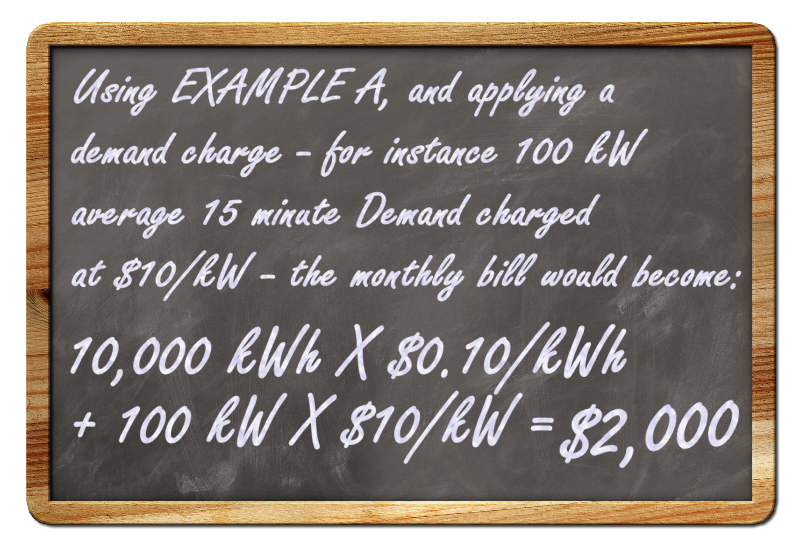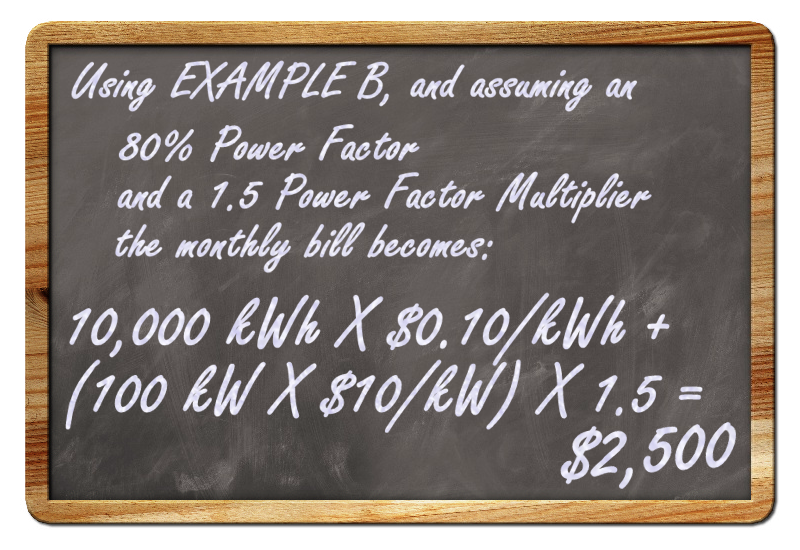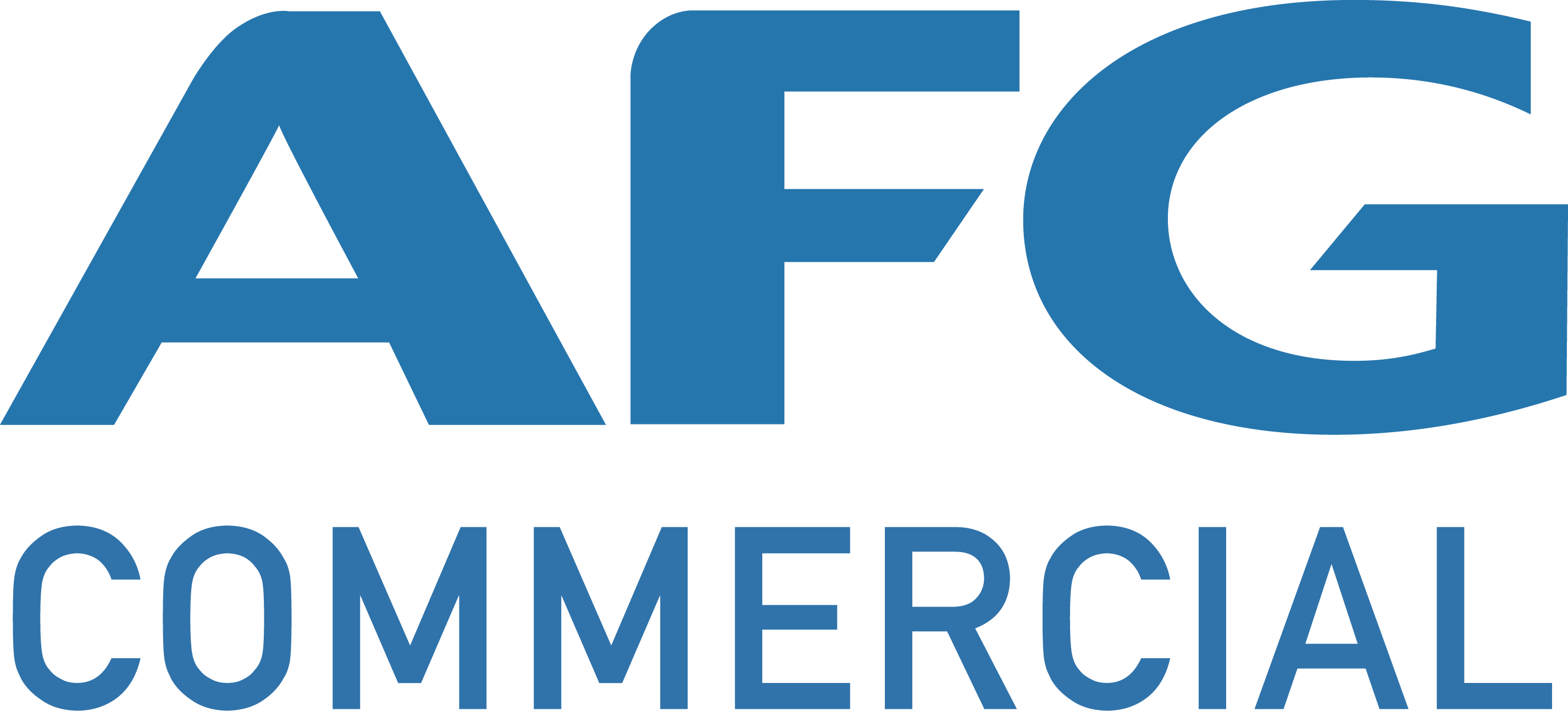
& Demand Charges
Electric energy prices have been rising at a pretty constant rate for the last few years, and more rate increases are predicted for the near future. If you’ve ever had a chance to study your utility bills you probably noticed that the majority of your total cost is comprised of charges for consumption and charges for demand. In some cases the demand charge can exceed the consumption charge, and in many cases the demand charge accounts for nearly half of the total bill or more when power factor penalties are present. It’s a good idea to understand how electric consumption & demand charges plus penalties are calculated, so you can determine the best ways to limit both and save your enterprise some money.
Consumption (Generation)
Your electric consumption (sometimes known as generation) charge is easy to understand and calculate. Consumption (generation) is measured in kWh (kilowatt hours). (Wattage is calculated by using the equation, Volts x Amps = Watts. Convert watts to kilowatts by moving the decimal point three places to the left.)
This is a measurement of the amount of energy you use during the billing period or, in other words, your electricity usage in a given cycle. kWh prices vary widely. Depending on your geographic location and your utility rate plan, you could be paying as little as $0.04 or as much as $0.30 per kWh or more.
You can reduce the amount of kWh you consume by making sure that energy consuming equipment like lights, office equipment, exhaust fans, HVAC, battery chargers and motorized equipment are turned on only when needed. The PowerLink automatic and static power factor correction units will also provide the perfect solution for reducing wasted amperage (power) when equipment must be running to operate your business.
Demand
Demand charges are additional fees that utilities charge non-residential or commercial customers for maintaining constant supply of electricity. Demand can be defined as: The maximum amount of energy a business uses at any given period in a billing cycle.
Demand can be a more complex subject. To the electric utility, demand represents the amount of electrical power that has to be generated at any given time. In other words, the utility has to be able to deliver enough power, at any time during the day, to deliver the maximum amount of power needed by all of its customers. As demand increases, more sources of power must be found – this can be very expensive. That expense is usually passed on to the utility’s customer base. To the consumer, demand represents how fast you use energy and how efficiently you use it which is also reflected in your power factor numbers.
The speed at which you use electrical power at a given point in time is measured in kW (kilowatts). (Wattage is calculated by using the equation, Volts x Amps = Watts. Convert watts to kilowatts by moving the decimal point three places to the left.) Your demand will vary from minute to minute as HVAC cycles, lighting, machines and other loads are turned on and off. The electric utility usually measures demand as an average of the power you draw in a 15 minute period. Very short bursts of demand, for instance when demand surges occur when electric motors turn on, will usually have little effect on the average 15 minute demand. But, longer periods of demand will have a big impact. For instance, leaving a large electric motor (i.e., a conveyor belt, compressor or etc.) turned on constantly will have a significant impact on your 15 minute demand.
The unit cost of demand (kW) is always much higher than the unit cost of consumption (kWh). Consumption is typically charged at a few cents per kWh. Demand is usually charged at a few to several dollars per kW.
As you can see from above, the interrelationship of Demand and Consumption are so intertwined that a reduction in one creates a reduction in the other.
Power Factor
Your demand charge can also be influenced by a characteristic called power factor. Power Factor (PF) is a charge or penalty that is obvious on some electrical bills, or hidden deep in the demand charges on others. Power factor is a measure of how efficiently your site uses electrical energy. If your equipment uses energy inefficiently, it will exhibit a low power factor and the electric utility must have more generation capacity online to serve your needs. On many electric bills, you’ll see your power factor measurement. Power factor is denoted as a percentage. A 100% power factor means your equipment is using power with 100% efficiency. Utilities usually apply a multiplier to your demand charge for power factors below 90%. Power factor multipliers of 1.2 to 1.5 (or more in some customer areas where penalties are progressively increased as power factors get lower) are common.
If your building uses energy at a low power factor, your bill will increase.
And finally, you may also see two different types of demand on your bill - actual demand and billing demand. Actual demand is just what it sounds like – the highest actual average 15 minute demand measured during the billing period. The billing demand is the highest 15 minute demand measured at your site in previous months. Each month, you could be billed the higher of these 2 numbers. Bills that show both actual demand and billing demand use a factor called demand ratchet. This simply means that if you demand a lot more power during one month – for instance during July in Miami – then the highest average 15 minute demand for that month will be billed for July and the next 11 months, even if the actual demand is lower during subsequent months. The only exception to this rule would be if your actual demand was greater than the July demand in a subsequent month – for instance August in Miami – then the demand that would be billed would increase to that higher number for August and used as the billing demand for the following 11 months, regardless of your actual demand. When your rate includes a demand ratchet, you will be locked into your highest demand for 12 months (some utilities use 6 months, some others use 18 months, but most ratchet plans use 12 months). Managing your demand is always a good idea. Managing your demand when you have to live with a demand ratchet is critical.
Going green used to cost a bundle . . .
Now it’s the way to save $
A PES electrical power analysis is the Way to Go for Savings!








